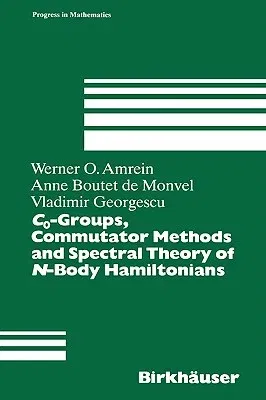The relevance of commutator methods in spectral and scattering theory
has been known for a long time, and numerous interesting results have
been ob- tained by such methods. The reader may find a description and
references in the books by Putnam [Pu], Reed-Simon [RS] and
Baumgartel-Wollenberg [BW] for example. A new point of view emerged
around 1979 with the work of E. Mourre in which the method of locally
conjugate operators was introduced. His idea proved to be remarkably
fruitful in establishing detailed spectral properties of N-body
Hamiltonians. A problem that was considered extremely difficult be- fore
that time, the proof of the absence of a singularly continuous spectrum
for such operators, was then solved in a rather straightforward manner
(by E. Mourre himself for N = 3 and by P. Perry, 1. Sigal and B. Simon
for general N). The Mourre estimate, which is the main input of the
method, also has consequences concerning the behaviour of N-body systems
at large times. A deeper study of such propagation properties allowed 1.
Sigal and A. Soffer in 1985 to prove existence and completeness of wave
operators for N-body systems with short range interactions without
implicit conditions on the potentials (for N = 3, similar results were
obtained before by means of purely time-dependent methods by V. Enss and
by K. Sinha, M. Krishna and P. Muthuramalingam). Our interest in
commutator methods was raised by the major achievements mentioned above.

